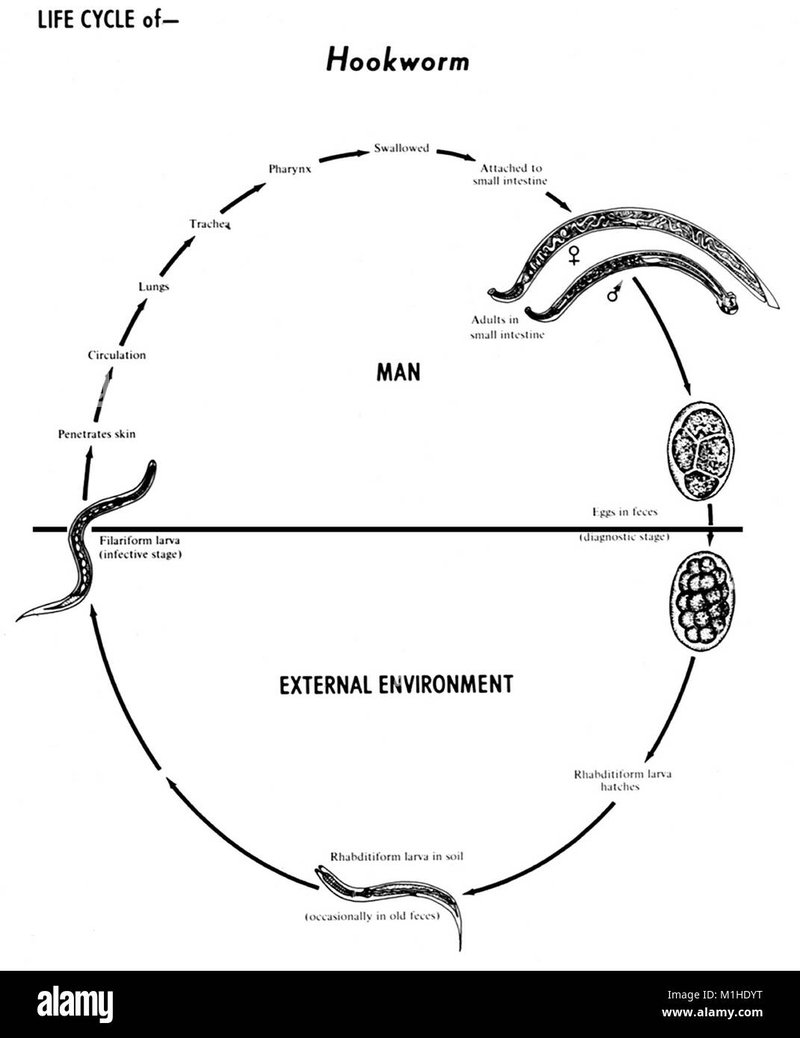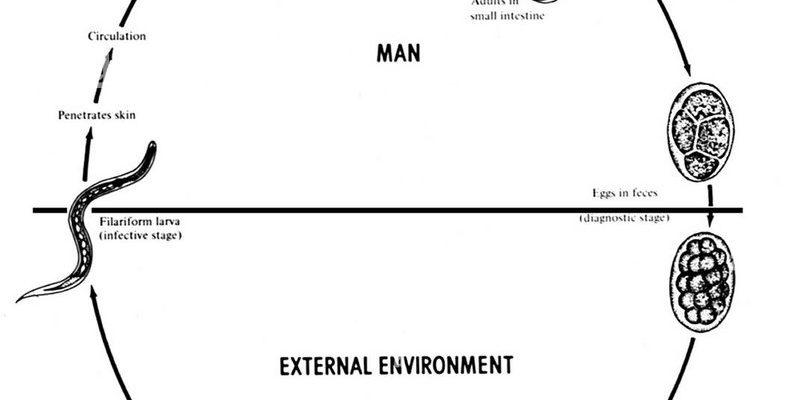
The life cycle of the hookworm is quite elaborate, involving multiple stages and a variety of environments. These worms belong to the *Ancylostoma* and *Necator* species and primarily infect humans through contaminated soil. So, how do these tiny invaders manage to survive and thrive, often without us even knowing? Let’s dive into the stages of their life cycle and discover the behaviors that enable them to wreak havoc.
Stage 1: Eggs and Their Arrival
The life of a hookworm starts with its eggs, and it’s a bit surprising how they come into play. Adult hookworms live in the intestines of their human hosts, where they lay thousands of eggs daily. These eggs are tiny and oval-shaped, much like miniature pearls, and they pass out of the body through the host’s feces.
Once in the soil, these eggs need the right conditions to grow. Warm, moist environments are ideal for their development. Within a week, the eggs hatch into *larvae*, entering the next phase of their life cycle.
You might be wondering why these larvae are important. Well, they’re the ones that eventually cause infections. The larvae can survive in the soil for weeks to months, waiting for a host like you or me to come into contact with them. It’s a clever survival tactic that keeps them active and ready to invade.
Stage 2: The Larval Stage
After hatching, the larvae enter a free-living stage. Here’s where things get interesting: these little guys can actually move around in the soil to find a potential host. There are two key types of larvae in this stage: *filariform* and *rhabditiform*.
– Rhabditiform larvae: These are the first larvae that hatch from the eggs. They feed and develop in the soil, helping maintain the population.
– Filariform larvae: These are the infectious stage. They’re like the stealthy ninjas of the hookworm world, ready to attach themselves to a new host.
When filariform larvae come into contact with human skin, they can penetrate the skin barrier. This typically happens when someone walks barefoot on contaminated soil. It’s almost like getting a surprise tickle from a tiny, invisible thief!
Stage 3: Migration Through the Body
Once the larvae have penetrated the skin, they start their journey through the human body. This migration is a little like an adventure story, as they travel from the entry point all the way to the intestines.
After entering the bloodstream, the larvae can make their way through various organs. They often travel to the lungs, where they can cause a cough or even be coughed up and swallowed. This phase is crucial because it allows the larvae to mature before they settle down in the intestines.
In the intestines, they attach to the intestinal wall using their sharp teeth. It’s like they’re setting up a cozy home, ready to feed off their host’s blood. Honestly, it’s a bit unsettling to think about how something so small can have such a large impact on our health!
Stage 4: Maturity and Reproduction
Once in the intestines, the larvae mature into adult hookworms. This transformation can take about 4 to 6 weeks. Adult hookworms are typically about 1 cm long, and they can live for several years in this cozy environment. Once matured, they start to reproduce, laying the groundwork for the next generation.
The adult hookworms have a knack for survival. They feed on the host’s blood, sometimes causing anemia and nutritional deficiencies in their hosts. The more they feed, the more effective they are at reproducing, creating thousands of eggs to be excreted in the feces.
This cycle repeats, and the hookworm’s life continues as long as conditions remain favorable. It’s a cycle that emphasizes how important our environment is in the life of these parasites.
Behavior and Adaptations
Hookworms have developed several behaviors that aid their survival. For instance, they are highly resilient to different environmental conditions. They can thrive in various climates as long as there’s sufficient moisture in the soil.
Their ability to adapt is remarkable. They can remain dormant for extended periods, waiting for the right conditions to hatch and thrive. This means they can survive in areas with seasonal changes, waiting for warmer months to find hosts.
Another fascinating behavior is their attraction to warmth and carbon dioxide. They are drawn to places where humans are, making it more likely for them to attach to a host. It’s almost as if they have a built-in GPS that leads them to their next meal.
Impact on Human Health
The presence of hookworms in humans isn’t just an academic concern; it has real health implications. Infected individuals may experience symptoms like fatigue, abdominal pain, and weight loss, primarily due to blood loss from the intestinal walls.
These symptoms can lead to more severe health issues, especially in children and vulnerable populations. Malnutrition and anemia are serious risks that come with a hookworm infection. If left untreated, the impact can be long-lasting, affecting overall health and development.
Understanding the life cycle of hookworms is crucial in preventing and managing these infections. By recognizing how they enter and thrive in our bodies, we can take steps to avoid exposure and seek treatment if necessary.
Prevention and Treatment
Preventing hookworm infections boils down to good hygiene and awareness. Here are some actionable tips to minimize your risk:
- Avoid walking barefoot in areas where soil may be contaminated.
- Use proper sanitation and hygiene practices, especially in places where hookworms are common.
- Regularly wash your hands after handling soil or before eating.
- Educate others about the risks and prevention techniques.
If you suspect you have a hookworm infection, seeking medical advice is essential. Treatment typically involves medications that target and eliminate these parasites. Anemia may also need to be addressed separately, often through dietary changes or supplements.
You might be thinking, “Can this really make a difference?” Yes! Awareness and prevention can significantly reduce the number of hookworm cases, improving overall public health.
Wrapping Up the Journey of the Hookworm
The life cycle of the hookworm is a fascinating blend of biology and behavior, showcasing how these tiny parasites thrive in various environments. From the moment they hatch in the soil to their eventual impact on human health, every stage reveals the intricate ways nature works.
By understanding their life cycle and behavior, we empower ourselves to take preventive measures and educate others. After all, knowledge is the best shield against these microscopic invaders. So, next time you think about worms, remember the hookworm’s sneaky journey and the toll it can take on our health. 🪱

